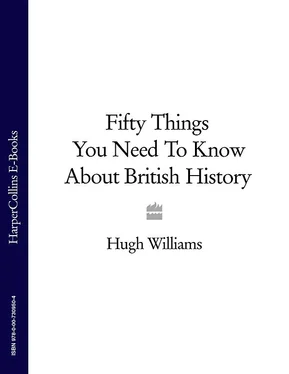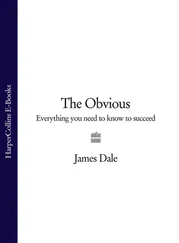The mission was a great success. Ethelbert was converted and by December of that year over 10,000 of his people had been baptised. The missionaries found the ruins of an old Romano-British church in Canterbury which they rebuilt. By the end of the seventh century it had become the spiritual headquarters of the leader of the Christian Church in England – and remains so to this day. Pope Gregory sent Augustine reinforcements from Rome and with them letters explaining how he saw Christianity spreading through the country. He laid out in considerable detail the future organisation of the Church, recommending that the country be split into two halves, north and south, as it had been in Roman times, with the northern section based in York. Augustine failed to complete this part of his task, mainly because the Celtic bishops refused to cooperate with him. Augustine had been less than tactful in his second important meeting with the Celts, refusing to rise from his chair when they approached him. They were naturally suspicious of him and his Roman ways: this sort of behaviour convinced them that he was not to be trusted. The Christian religion had its divisions then as now. But the planning and care with which Augustine approached his task ensured that Roman ideas prospered, and eventually triumphed, in the way in which the English Church was organised. Pope Gregory was a wise guide. He knew how easy it was to lose people after they had been converted: they needed your constant attention. He urged Augustine not to abandon the old pagan rituals completely, but to incorporate them into new forms of worship. The heathen midwinter solstice, for instance, was slotted in to coincide with the birth of Christ. Old temples were consecrated as new churches, and Christianity embraced rather than uprooted the practices it intended to replace.
Early in the sixth century, long before Pope Gregory planned Augustine’s mission to England, a monk called Saint Benedict wrote a rule book for the monastic life. He described a monastery as ‘a school for the Lord’s service’, and set out the qualities a monk needed to have. ‘Idleness,’ he said, ‘is the enemy of the soul.’ Work, obedience and humility were essential to a life of devotion. Monks should own nothing and share everything. Saint Benedict told them what they should eat, what they should drink, what they should wear and when they should worship. His book became the basis upon which monasteries all over Western Europe were run: the discipline of the early Christian monks made them a powerful force capable not only of putting down deep roots in a single place, but also going out into the world as the persuasive agents of conversion. In Britain the growth of monasteries proved to be an important part of the country’s submission to the Christian message. Lindisfarne, founded by Saint Aidan in 635, became the centre for wresting Northumbria – which in those days made up the whole of the North of England – from pagan worship.
The date of Augustine’s death is not known but he seems to have died very early in the seventh century, probably around 604 AD. The English Church prospered but arguments continued about the proper days for feasts and important celebrations. In 664 AD the King of Northumbria, Oswy, called a synod at the abbey in Whitby to resolve the disputes between the Celtic and Roman Churches. The southern kingdoms of Wessex, Kent and Essex were following ritual according to the teachings of Rome, but the north preferred the Celtic way that had been taught them by Saint Columba and his missionaries from Iona. Oswy, influenced as much by a desire to form political alliances with his fellow princes in the south as he was by religious convictions, listened to the debate and pronounced in favour of Rome. ‘Peter is the guardian of the gates of Heaven, and I shall not contradict him,’ he is supposed to have said and, mindful of his own salvation, added: ‘otherwise, when I come to the gates of Heaven, he who holds the keys may not be willing to open them.’ All bishops and monasteries were brought under the authority of the Archbishop in Canterbury where Saint Augustine had built his church nearly seventy years before. The mission sent from Rome had finally triumphed and the long, troubled history of the Catholic Church in Britain had begun.
CHAPTER 4
Alfred the Great Becomes King of Wessex
871 AD
Alfred the Great was the most important Anglo-Saxon king to rule in Britain between the fall of the Roman Empire and the Norman invasion of 1066. By protecting his kingdom against conquest by the Vikings, he ensured the survival of the English language and English laws.
‘Rule Britannia!’ is one of Britain’s favourite patriotic songs. Even those who find its expressions of national superiority a little hard to take can find themselves jolted into acquiescence when it is belted out with gusto at events like the Last Night of the Proms. It has been a hit ever since it was first performed in the grounds of Cliveden House in Buckinghamshire in 1740 where it was the last, rousing number in a masque composed by Thomas Arne for the daughter of Frederick, Prince of Wales. The masque tells the story of a wise, brave king who has fled from his enemies to live anonymously in exile among his people. He is visited by a spirit who tells him not to despair. He rallies, rounds up his troops and leads them to victory. The plot ends as the King’s son announces that British values have triumphed – ‘See liberty, virtue and honour appearing’ – and then comes the song that tells us ‘Britons never will be slaves.’ The masque is called Alfred .
Alfred was a good subject for Thomas Arne’s entertainment. The Prince of Wales was the centre of opposition to the King’s prime minister, Robert Walpole. He and his followers called themselves ‘patriots’ – so it suited their purposes to make a connection between their beliefs and those of Alfred, the patriot king who had saved his country from the tyranny of the Viking invaders. In the early eighteenth century, Alfred came to be seen as the perfect representation of British liberty and justice. The gardens at Stowe House in Buckinghamshire, one of the great ornaments of the English landscape, contain a ‘Temple of British Worthies’ designed in 1734 by William Kent in which King Alfred is described as the ‘mildest, justest, most beneficient of kings’. He ‘crush’d corruption, guarded liberty and was the founder of the English constitution’. He is the only king in British history to be called ‘Great’. He looms out of the Dark Ages like a beacon of safety. He is seen as an image of courage and common sense around which the British can build the continuity of their history. Without Alfred all might have been lost. He is the link to our true past.
By the beginning of the ninth century Britain was broadly divided into the Celtic areas of Wales, Scotland and Cornwall and the Anglo-Saxon kingdoms of Northumbria, Mercia and Wessex. The highly successful King of Mercia, Offa, who ruled in the second half of the eighth century, had built a fortification along the length of his boundary with the Celtic tribes to the west. Offa’s Dyke effectively created the outline of the country which has been known as Wales ever since. The Anglo-Saxon kingdoms had emerged through battle and conquest between rival warlords. Since the middle of the seventh century they had fallen under the command of the Roman Church and their monks and clergy held enormous power. The Church was divided into parishes which supervised the needs of the people in their immediate vicinity. The abbots and monks could read and write, but many of the people to whom they preached could not. The clergy became the administrators of many aspects of everyday life, making wills and apportioning land. Superstitious kings, anxious to save their souls, were often only too happy to grant estates to the abbeys and monasteries that were growing up everywhere, and the Church was equally happy to benefit from this need for spiritual insurance. Already the very early signs of feudal society were beginning to emerge, a world in which each man had his place and was expected to keep to it. The Anglo-Saxons were farmers and woodsmen. They lived in clusters in small townships or in groups alone in the forest. They were suspicious of each other and did not take kindly to strangers. Then, into this quiet, inward-looking, agricultural world came the Vikings.
Читать дальше












